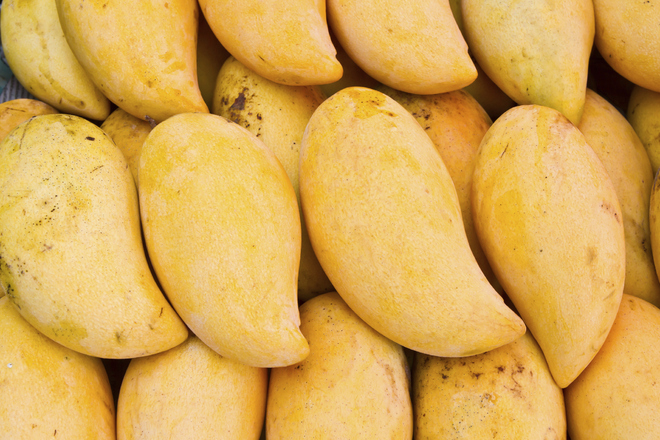Sports drinks contain electrolytes and are a convenient way to meet increased energy and fluid needs. These are useful when used appropriately and under professional supervision. thinkstock
Ishi Khosla
The competitive edge which an athlete looks for to win has no limits and many go to lengths trying to improve performance through nutritional supplements and special compounds which enhance performance called ergogenic aids. More than 75 per cent of recreational and elite athletes are known to use them in some form.
Nutritional supplements and ergogenic aids include products that:
Provide calories (e.g. liquid supplements and energy bars).
Provide vitamins and minerals (including multivitamin supplements).
Contribute to performance during exercise and enhance recovery after exercise (e.g., sports drinks and carbohydrate supplements).
Stimulate and maintain muscle growth (e.g. purified amino acids).
Provide micronutrients, herbal, and/or cellular components that are promoted as ergogenic aids to enhance performance (e.g., caffeine, chromium picolinate, creatine, and pyruvate).
Sports drinks, gels and sports bars that contain carbohydrates, proteins, fats, and electrolytes are a convenient way to meet increased energy, carbohydrate, electrolyte and fluid needs. They are a useful adjunct to a well-planned diet, when used appropriately and under professional supervision.
Supplementation is necessary if some specific deficiency is identified. For example: Most female athletes are recommended iron and calcium supplements as they are prone to iron deficiency due to menstrual losses.
Products of greater concern, however, are dietary supplements promoted as ‘performance enhancers’. Herbals, enzymes, hormones and other compounds carry attractive claims. While, only few of these have been well-researched, most lack vigorous clinical trials to evaluate efficacy, application and safety.
Common ones include:
Amino acids including branched chain amino acids (leucine, isoleucine and valine), taurine, glutamine have been proposed to provide energy and delay central nervous system fatigue, however, studies in humans, have shown inconsistent results. Safety and effectiveness of these have not been, yet, established.
Creatine, a nitrogenous compound synthesised by the liver, pancreas and kidney, has become a popular supplement, as it is believed to prolong short-term energy availability and improve performance in short-term, high intensity activities such as weight lifting. Creatine supplements appear to have no benefit for aerobic training and may cause immediate weight gain attributable to water retention. Other concerns including muscle cramps, muscle strains, kidney dysfunction, and GI distress have also raised questions about the efficacy of creatine.
Hormones like andrstenidione and DHEA (Dehydroepiandrosterone)have been known to increase testosterone levels and enhance muscle building — acting as “natural” steroids. No long-term studies have tested the safety of androstenedione or DHEA. Also, these, hormones precursors are not recommended because they have many negative effects.
Caffeine, a natural stimulant, is thought to improve athletic performance by facilitating signals between the nervous system and the muscles. However, the fact that caffeine is mild diuretic and enhancing urine production is probably not the best course of action right before competition.
Carnitine, a natural compound in foods, is synthesised in the liver and kidneys from the amino acids lysine and methionine. The appeal to athletes is the idea that supplemental carnitine could help move long-chain fatty acids faster so they will be metabolised more quickly, thus increasing the use of fat as an energy source. However, research finds no consistent evidence that it can improve physical performance in healthy people.
Chromium, a trace element, is thought to play a vital role in carbohydrate and lipid metabolism, potentially influencing weight, body composition and athletic performance. It is believed that, by enhancing insulin action, chromium increases amino acid uptake, which in turn increases protein synthesis and promotes gain in muscle mass. Although, chromium is a popular supplement, but its efficacy and long-term safety are uncertain.
Ephedrine, one of the most controversial supplements, in the marketis known to stimulate the central nervous system, raise heart rate and blood pressure and is an effective broncho-dilator. Serious side effects and even deaths, attributed to this supplement, led to FDA’s conclusion that ephedrine posed an unreasonable risk of illness or injury.
Ginseng, used by Chinese for thousands of years to treat and prevent numerous disorders, continues to be popular, especially among athletes, as it is known to improve athletic performance by increasing stamina and aerobic capacity. Further research on this popular herb is needed to evaluate its effectiveness as an ergogenic aid.
Glycerol (also referred to as glycerine), a powerful humectant, with a strong capacity to hold large volume of water is commonly used by endurance athletes as a means of super-hydration. Higher doses of glycerol may lead to headaches, blurred vision and in large amounts may cause additional stress on the cardiovascular system. Although many endurance athletes use glycerated water to enhance their hydration state, it has never been adequately tested for safety.
Medium-Chain triglyceride oils, are believed to be an instant source of energy, however, majority of research, does not support MCT supplementation as an ergogenic aid. A downside of MCT supplementation is that its taste may be unacceptable and it may contribute to gastrointestinal distress. Although, pyruvate, colostrums, CoenzymeQ10, Sodium bicarbonate and ribose too are commonly used by athletes as performance enhancers, however, there are concerns about their safety and usage. Creatine, bicarbonate, glycerol and caffeine may be beneficial in some circumstances.
Performance is the result of many factors, including talent, training, equipment, diet and mental attitude. Few nutritional ergogenic aids are supported by credible science or evidence of positive outcomes. These compounds must be used with caution, and only after careful evaluation of the product for safety, efficacy, potency and whether or not it contains a banned substance. There is limited evidence to support the use of most ergogenic aids. If you must, then look for supplements that have been well-investigated and researched. Use of these, in general, must be discouraged unless these are permitted, taken under supervision and do not violate anti-doping regulations.
The writer is Clinical Nutritionist & Founder, www.theweightmonitor.com, Centre for Dietary Counselling, Founder-Whole Foods India & Founder President-Celiac Society for Delhi.




